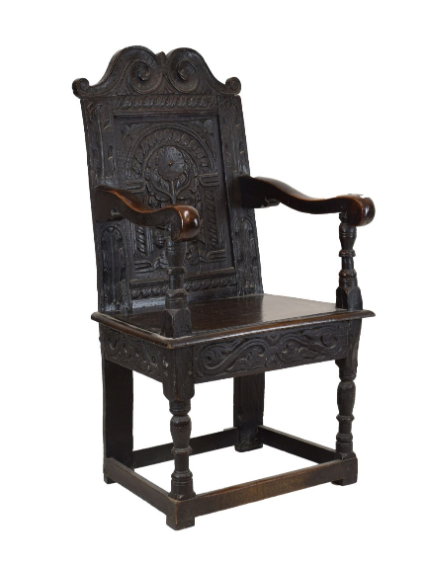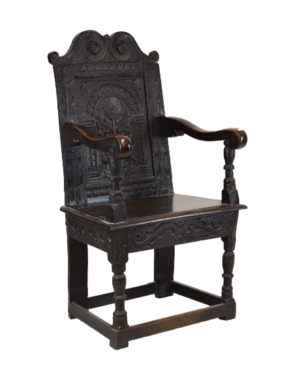The best houses in post-medieval Scotland had narrow timber frontages which expanded inside like Doctor Who’s Tardis.
Beyond the deceptive façade, a heavily-carved staircase led to a first-floor public room, with a further one or two floors above and a garret in the gable.
Floors were covered with woven rush mats and carpets kept for table coverings. A solid ‘joyned’ table of oak or elm would be used in the principal room, a smaller example kept in the parlour.
But chairs were symbols of wealth and nobility, retained for the head of the family and used only by the masters and mistresses of the house.
Come the 1600s, though, carpenters began to see demand exceed supply as chairs became fashionable in the homes of lesser mortals. The style adopted is known widely as the Wainscot chair.
These chairs were usually made from the finest grade of oak and were characterised by flat wooden seats, carved seat rails, arm supports, front legs turned by a lathe, back legs square-sectioned, and legs joined by low straight stretchers.

Clevedon Salerooms of Bristol sold a typical 17th Century Wainscot on September 3. The carved back on this example showed an arcaded panel carved with a flowering plant and thistles.
The latter ornamentation prompted the auctioneer to describe the chair as ‘probably Scottish.’ But when Kirkcaldy Art Gallery staged a ground-breaking exhibition of vernacular chairs in the 1990s, the distinctive carved motif of 17th Century Scottish examples was a very English-looking rose!
I have one at home to which some Victorian wag fitted brass castors. The hall now has a speed limit.
The Wainscot at Clevedon Salerooms sold for £200.
Wainscot chair, £200 (Clevedon Salerooms).











